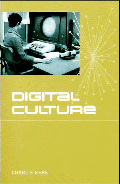The O'Reilly Emerging Technologies Conference
 I lay in my tent, still jetlagged after three days in San Francisco, listening sleepily to the light burbling of people bitching about blogger extraordinaire Dave Winer and talking up Movable Type press releases. Have I come all this way, ran my perturbed thoughts, to listen to the bloggerati bitching about Dave Winer? But, by the end of the week, I was relieved and pleasantly surprised at how energetic and inspiring the O’Reilly Emerging Technology Conference turned out to be.
I lay in my tent, still jetlagged after three days in San Francisco, listening sleepily to the light burbling of people bitching about blogger extraordinaire Dave Winer and talking up Movable Type press releases. Have I come all this way, ran my perturbed thoughts, to listen to the bloggerati bitching about Dave Winer? But, by the end of the week, I was relieved and pleasantly surprised at how energetic and inspiring the O’Reilly Emerging Technology Conference turned out to be.
Wireless networks facilitator, Freenetworks.org, was a ubiquitous and laudable presence. And they had plenty to be excited about: community wireless networking is benefiting from new reverse-engineering work on 802.11 drivers, allowing cheap commercial cards to simultaneously act in ‘ad-hoc’ and ‘host ap’ mode – that is, to both forward and transmit a radio signal.
The conference was big in blog-world, and had flourishing IRC back channels, where attendees could discuss the talk over the wireless network within the conference, and outsiders could read collaborative documentation. On the IRC, the use of geo-location services to connect social networks were causing excitement. The emerging ‘geo’ craze is based on the combination of open GIS (Geographic Information Systems) – topographic data and open source – and ‘collaborative recommendation’, mapping the web world onto the physical one.
In the Mapping the Wireless Revolution session, Schuyler Erle and Rich Gibson remarked that many of the technological themes ‘emerging’ have a 20-year history: much of the new work is a rediscovery and recovery of past ideas and ideals.
The way the ‘social software’ idea caused much fluttering of punditry seems a little hobbled in this respect. It’s as if people are now determined to reinvent concepts like Usenet – the original newsfeed/discussion protocol on the internet – and IRC out of whole cloth. That said, though the social software talk seemed unfocused and rambly, the geeks were receptive to it; the talkers and the hackers are all listening to each other.
‘Interdisciplinary’ was a keyword: library scientists and game designers, network architects and knowledge engineers, semantic search and semantic web, cross-reference and cross-collaboration. Aspirational vapourware like the Chandler Personal Information Manager, or the BBC’s interactive ‘platform for civic activism’, ican, uncover potential in already available technology such as Apple’s Rendezvous ‘zero-config’ networking protocol, or Upmystreet’s local forum, Conversations. All these suggest new uses for the peer-to-peer search and infosharing work done at ETCON’s predecessor, the original ORA P2P conference.
The future has never seemed so now. The applications that will reach outside the geek clique to encompass the less networked world, build a geoscope for us all, provide personal and political escape tools, have never seemed so buildable. Cheap hardware from Maplins, open software and data; the disappearance of the computer, the minds of the network’s participants emerging into the foreground.
ETCON – The O’Reilly Emerging Technologies Conference // Santa Clara, California // 15 February – 22 March 2003
NoCat Community Node Database [http://maps.nocat.net]Maciej Ceglowski’s Idleworlds: [http://www.idlewords.com]The Game Neverending [http://www.gne.net]David Isenberg’s site [http://www.isen.com]Tom Igoe’s Physical Computing Site [http://stage.itp.nyu.edu/~tigoe/pcomp]Etcon talk on collaborative mapping [http://space.frot.org/etcon.html]
Mute Books Orders
For Mute Books distribution contact Anagram Books
contact@anagrambooks.com
For online purchases visit anagrambooks.com







